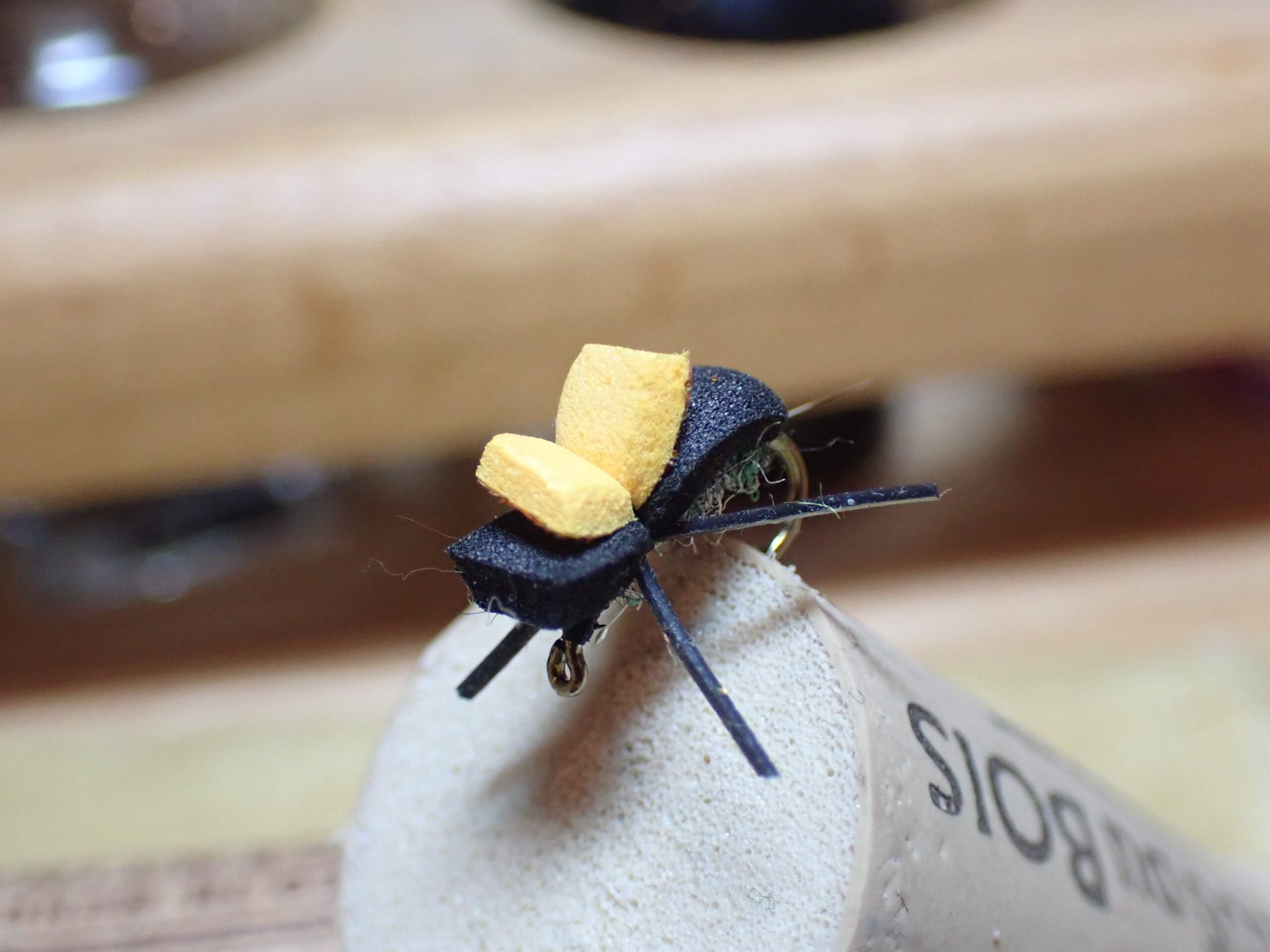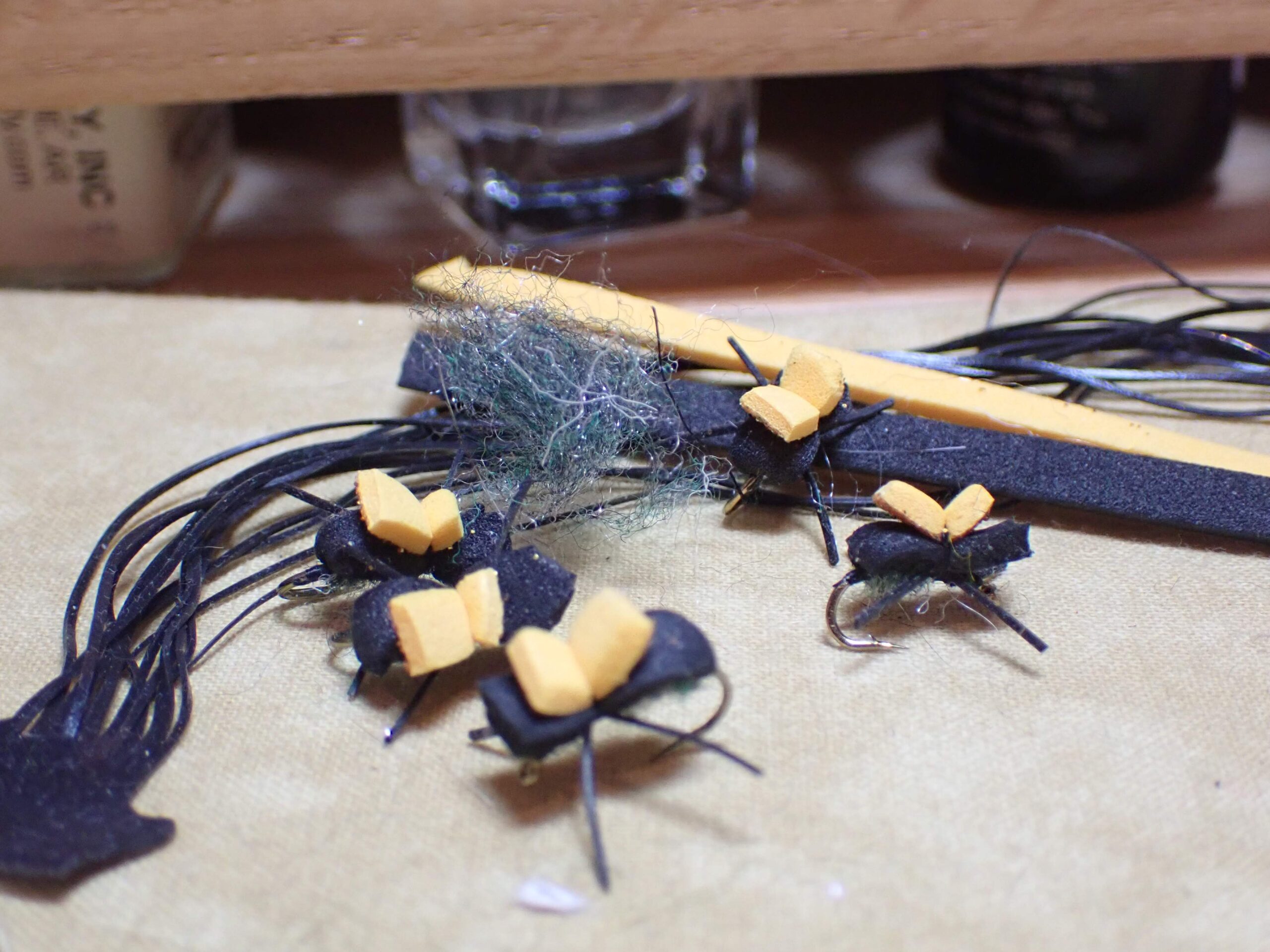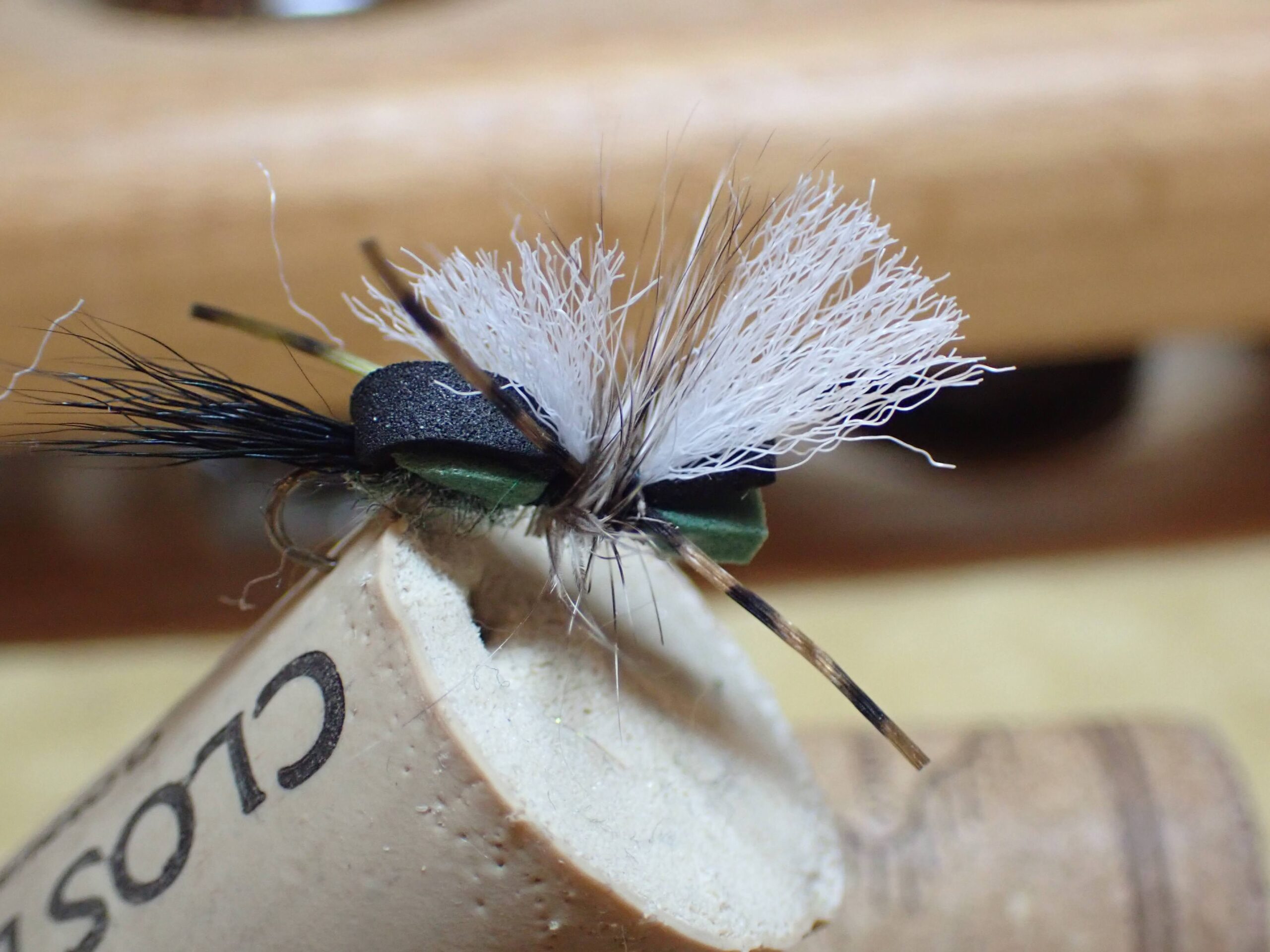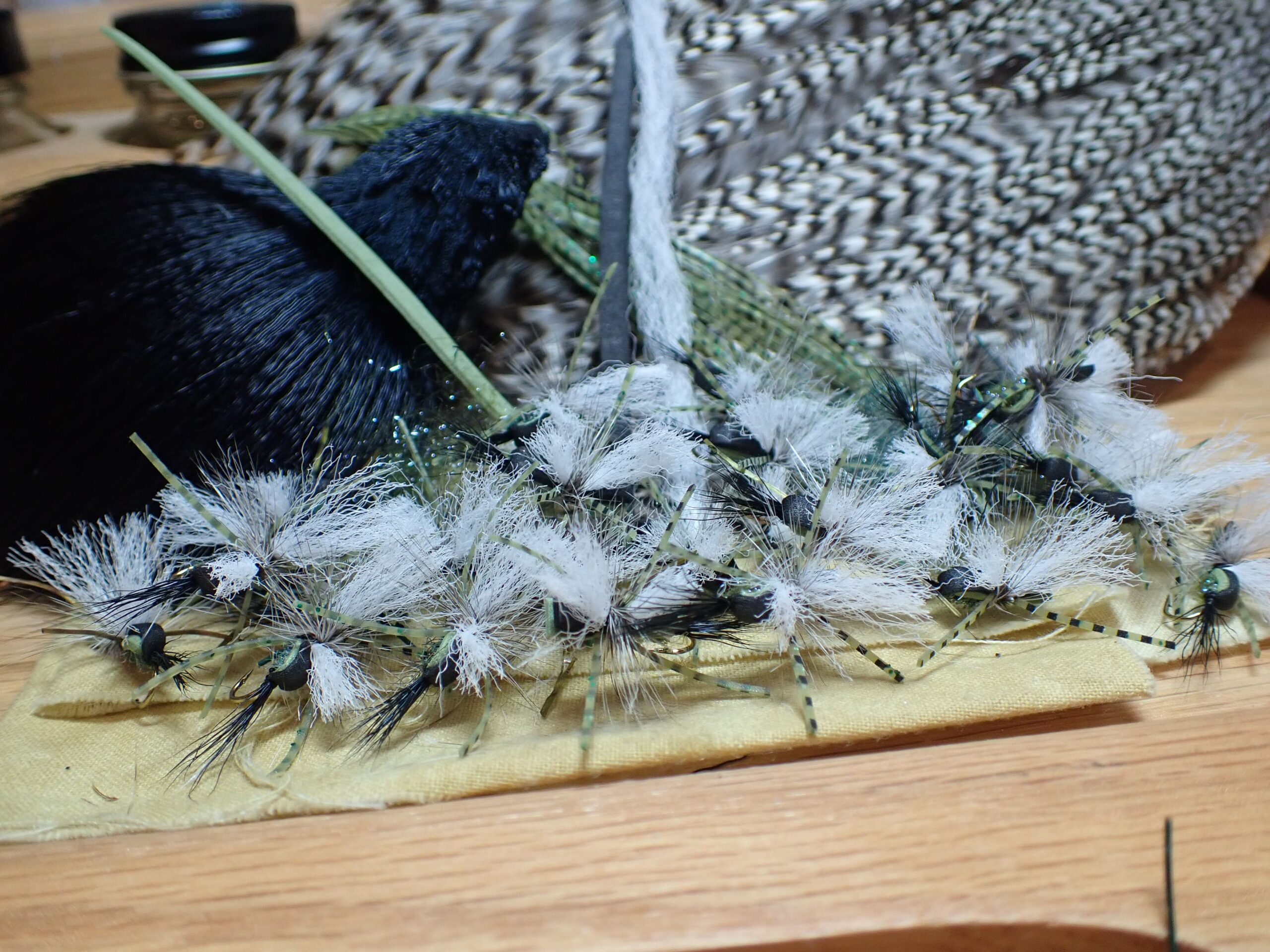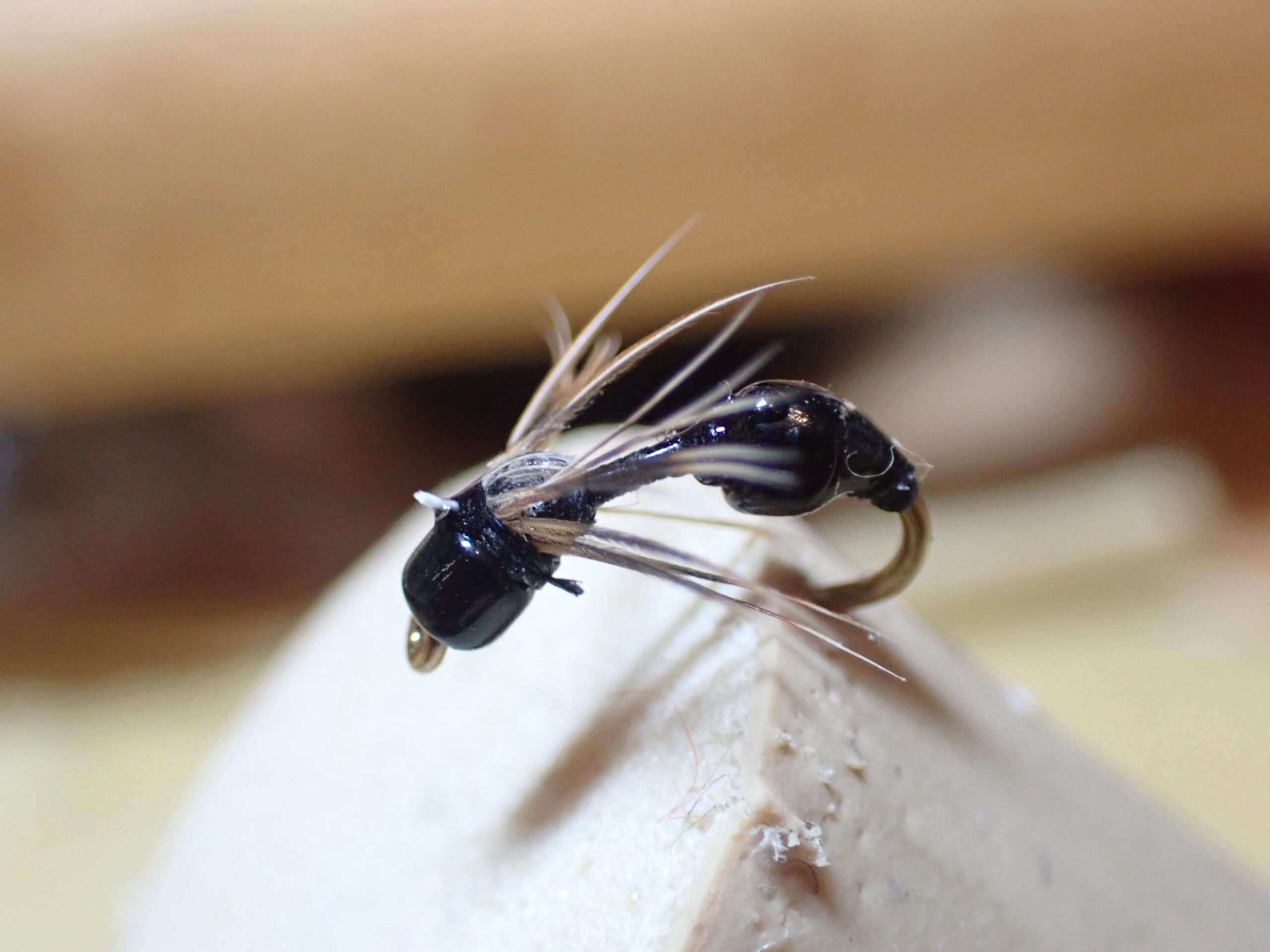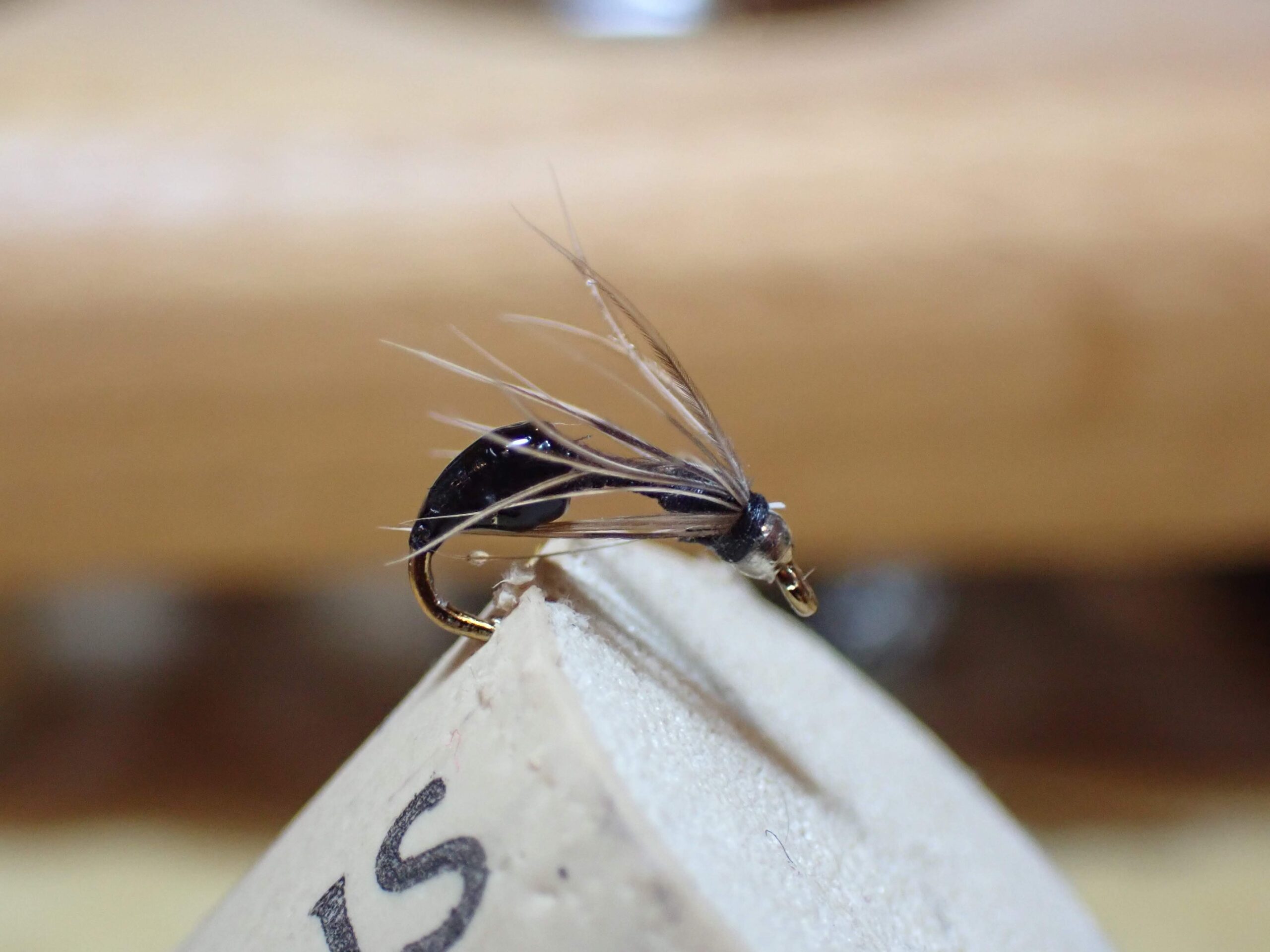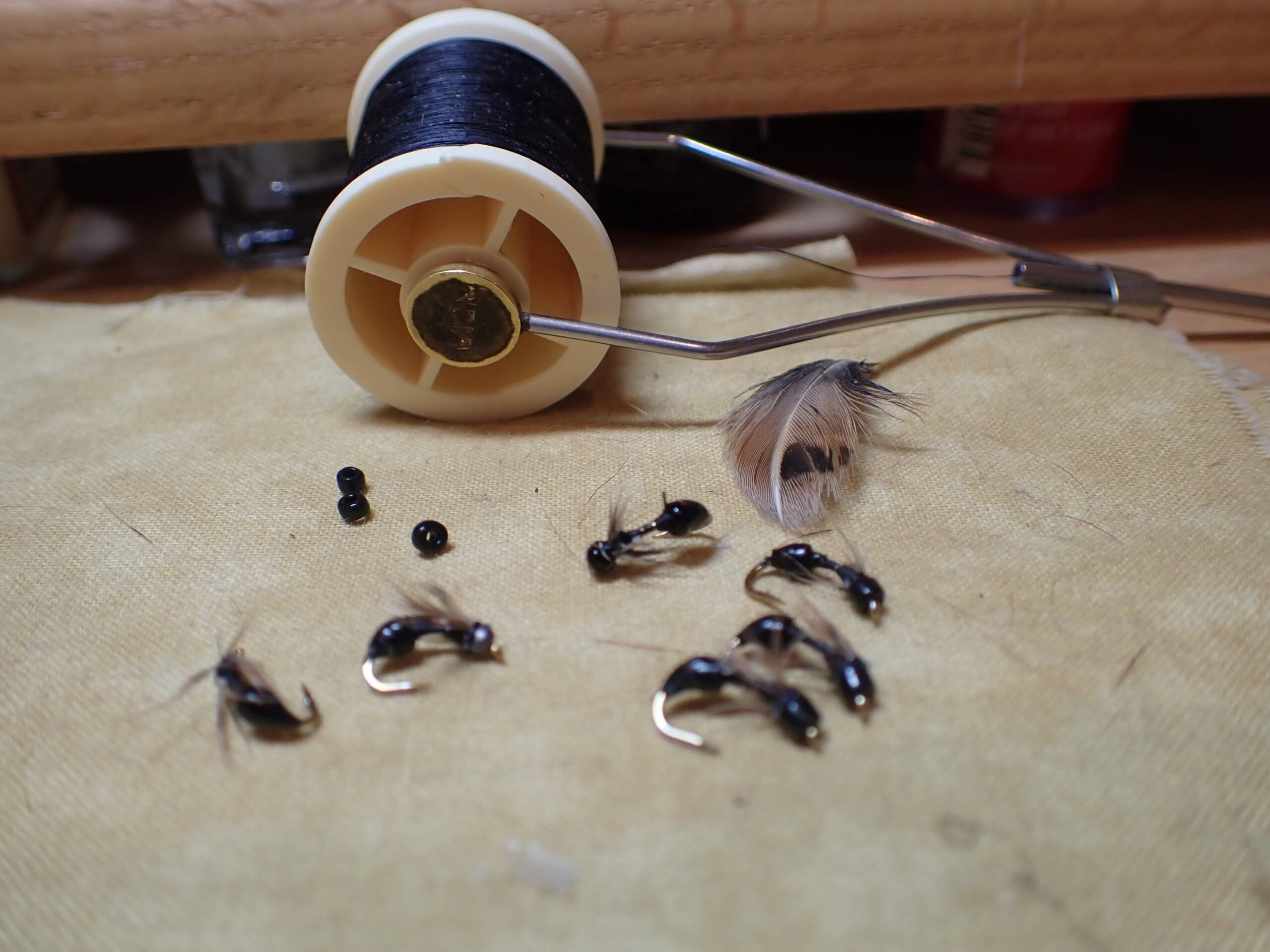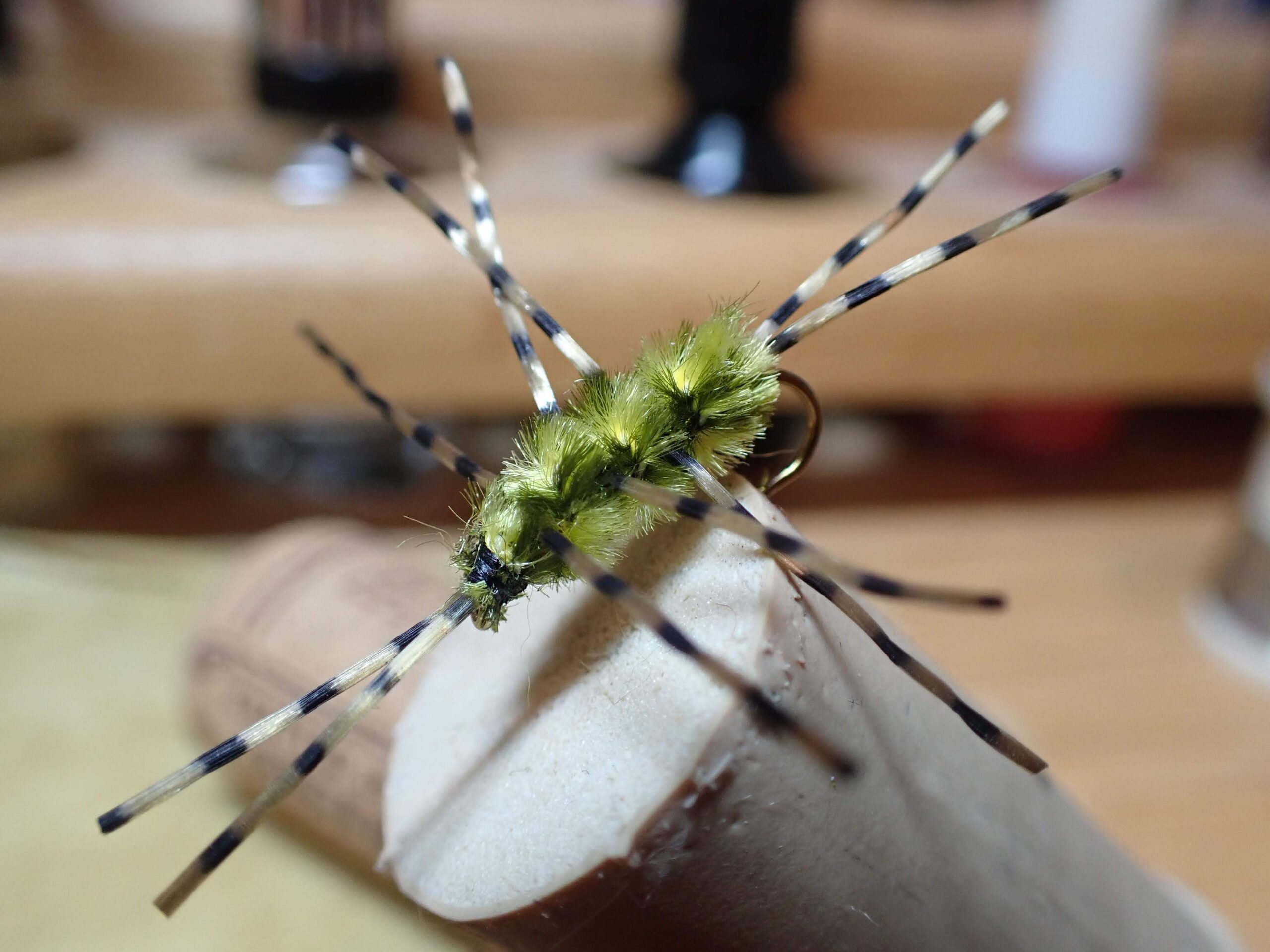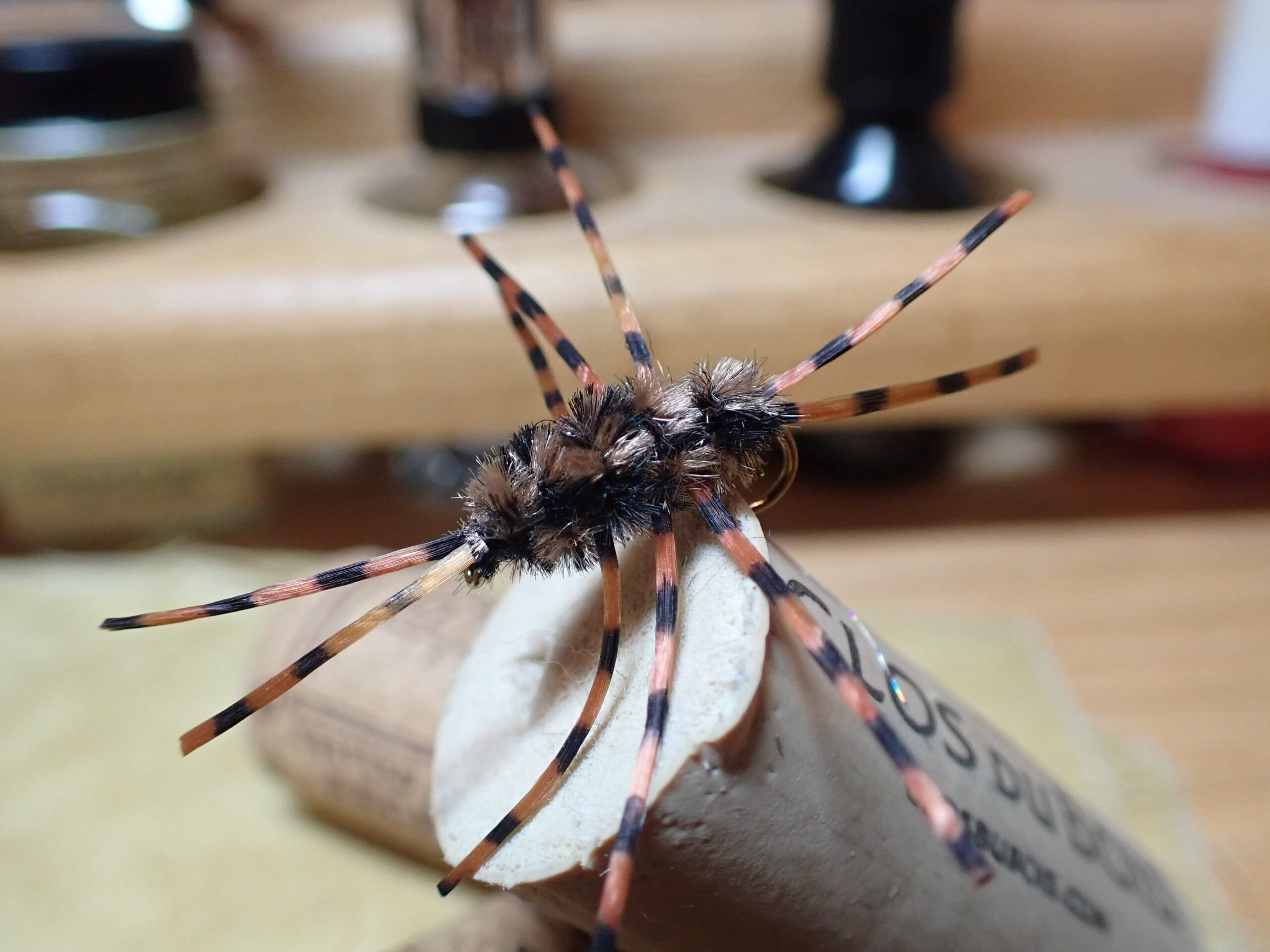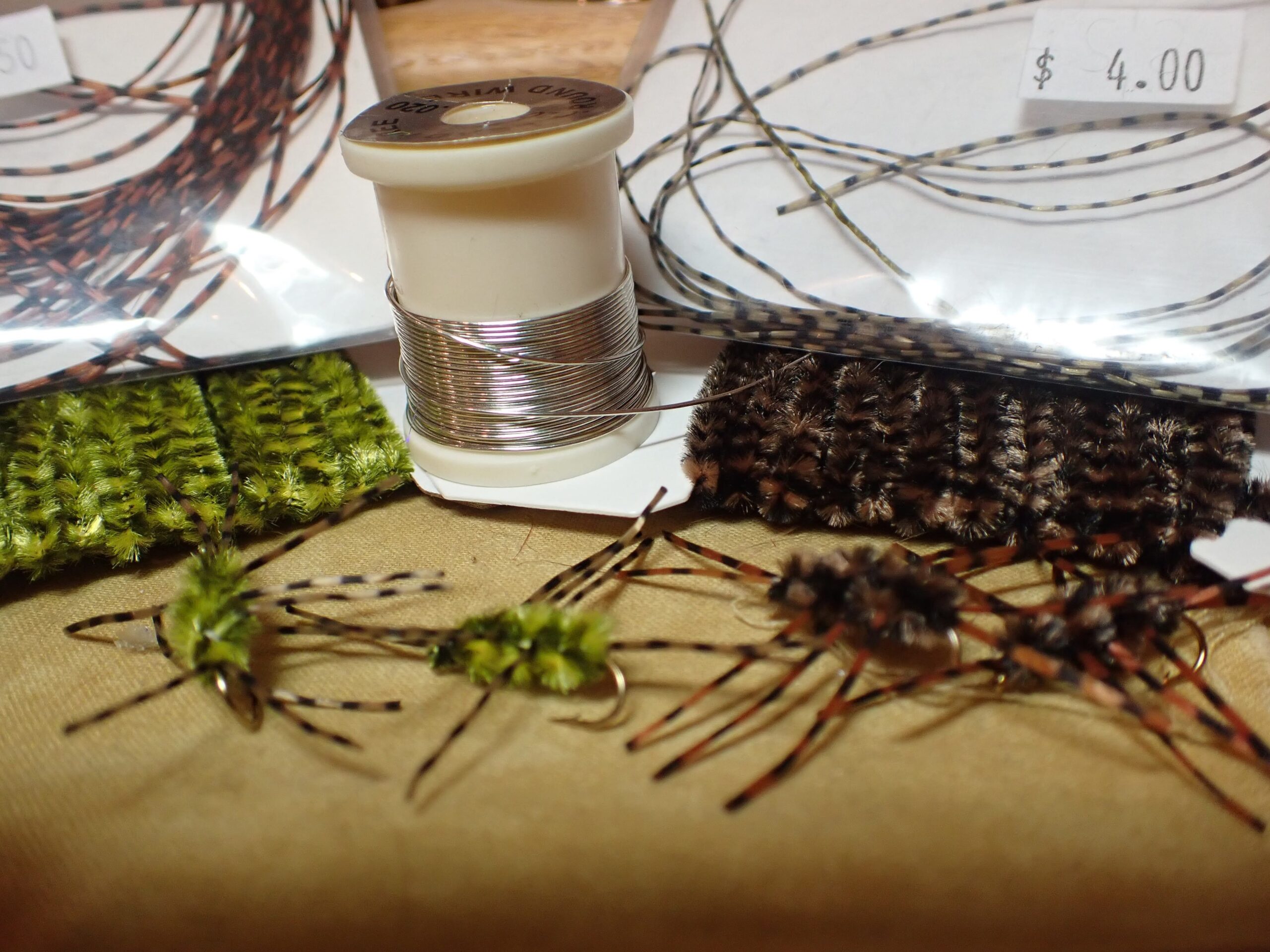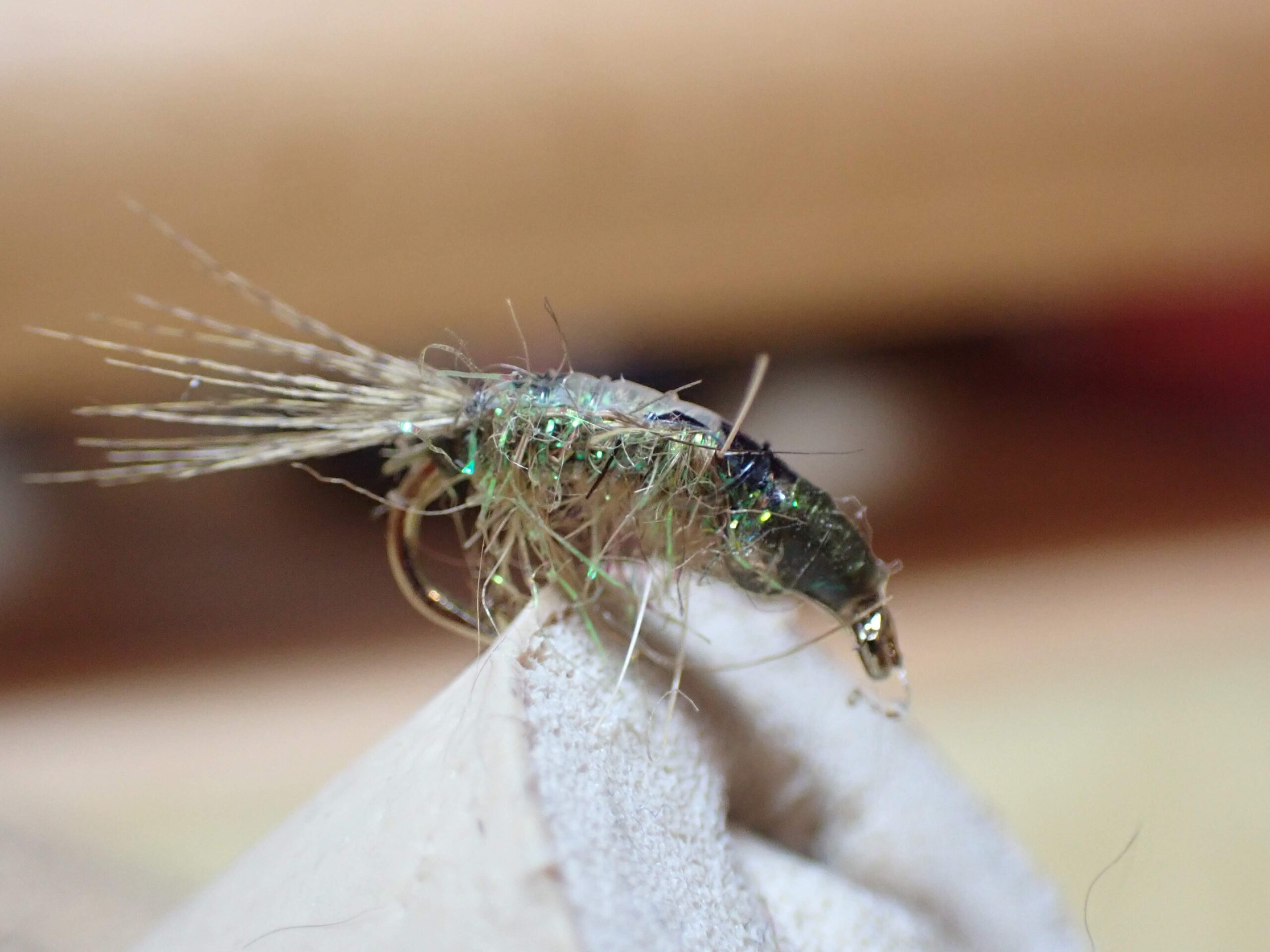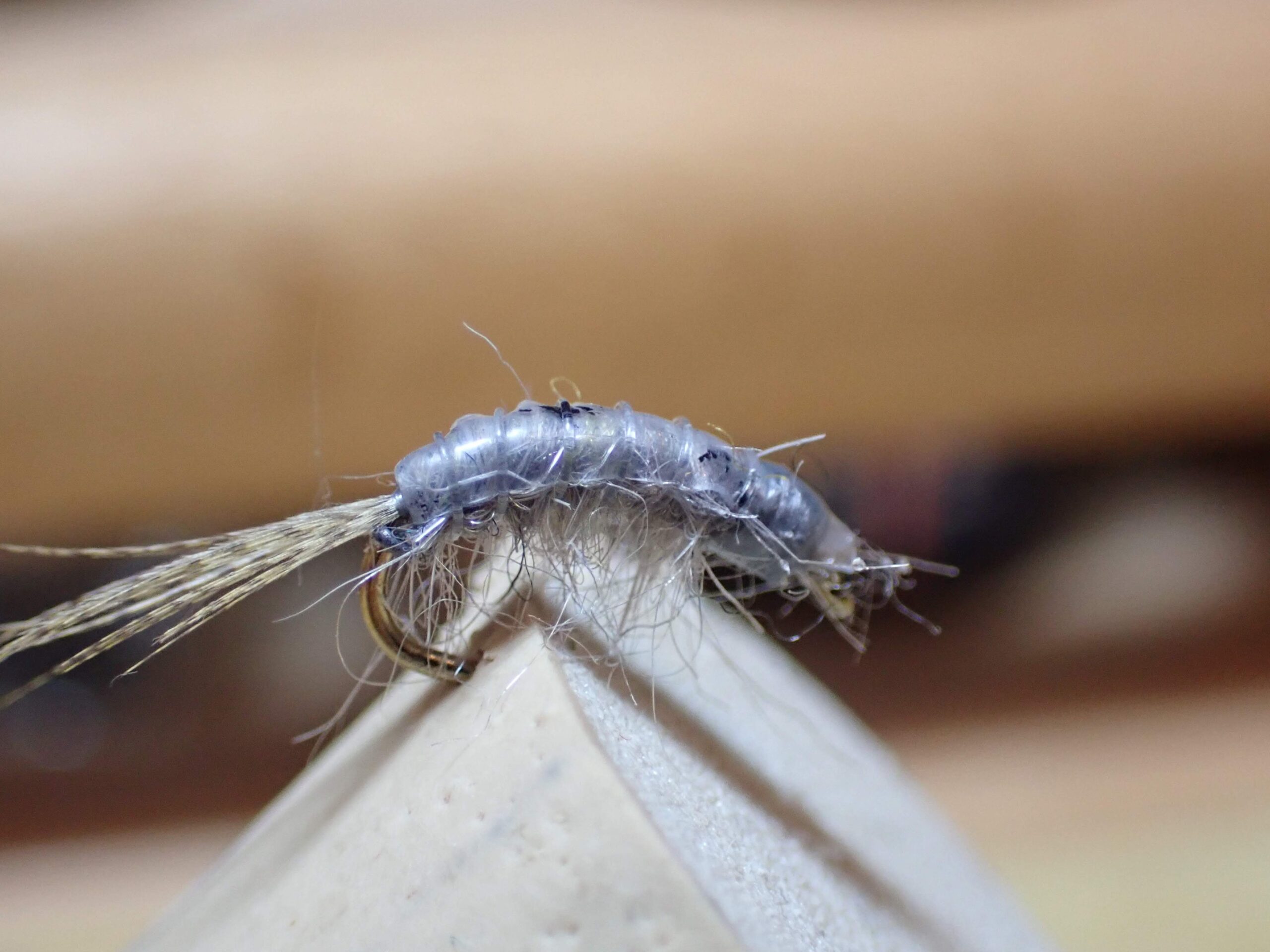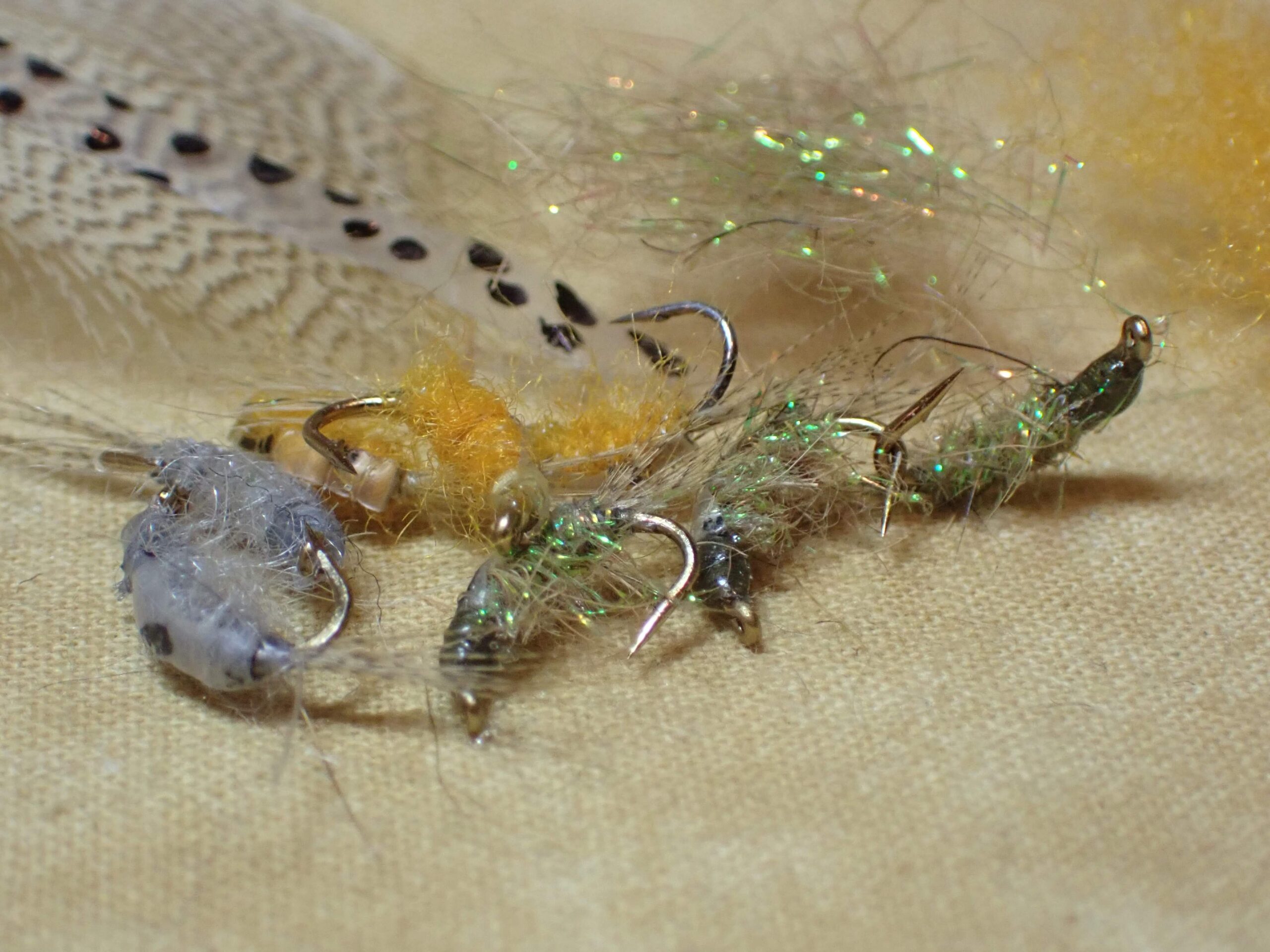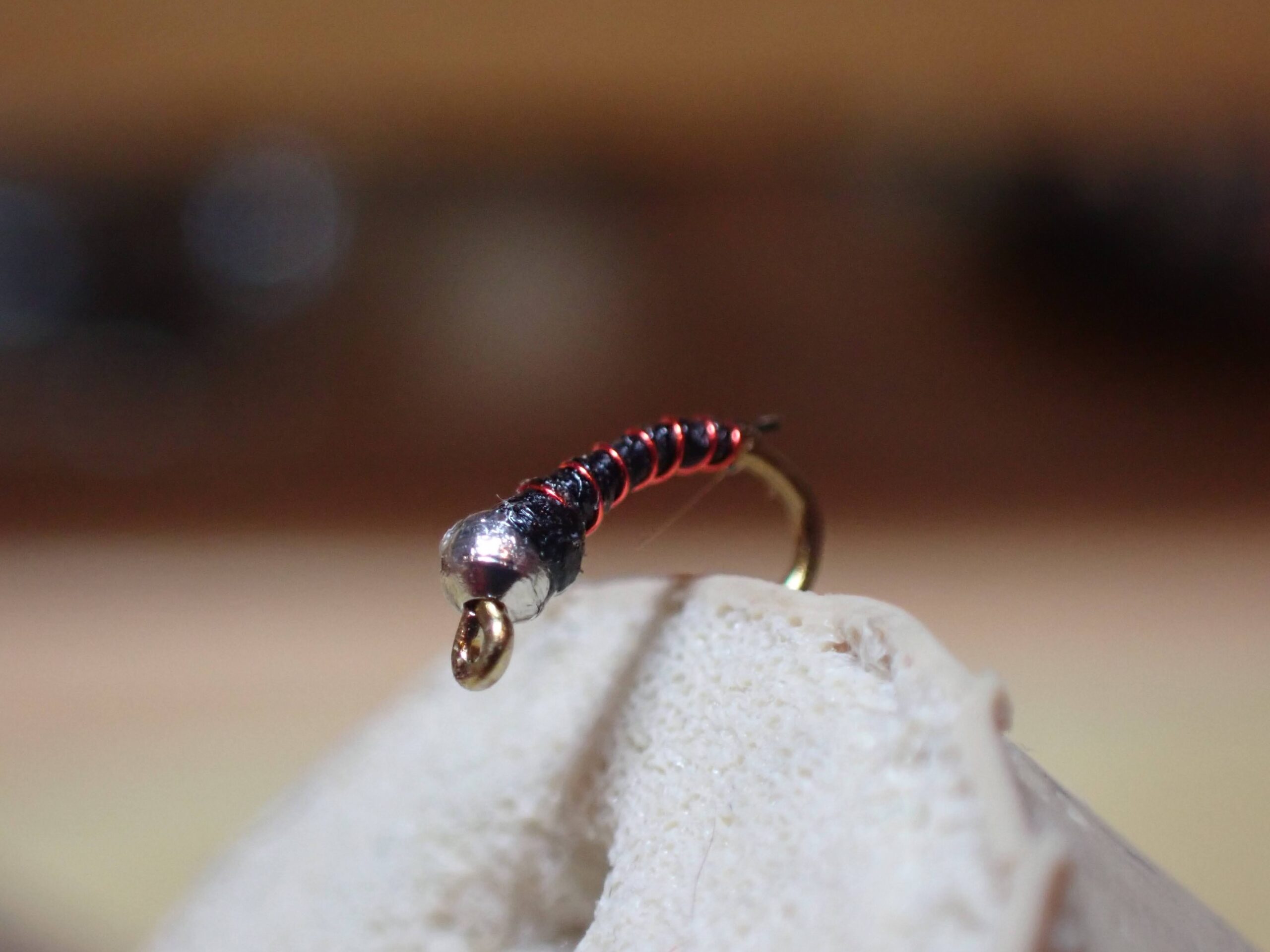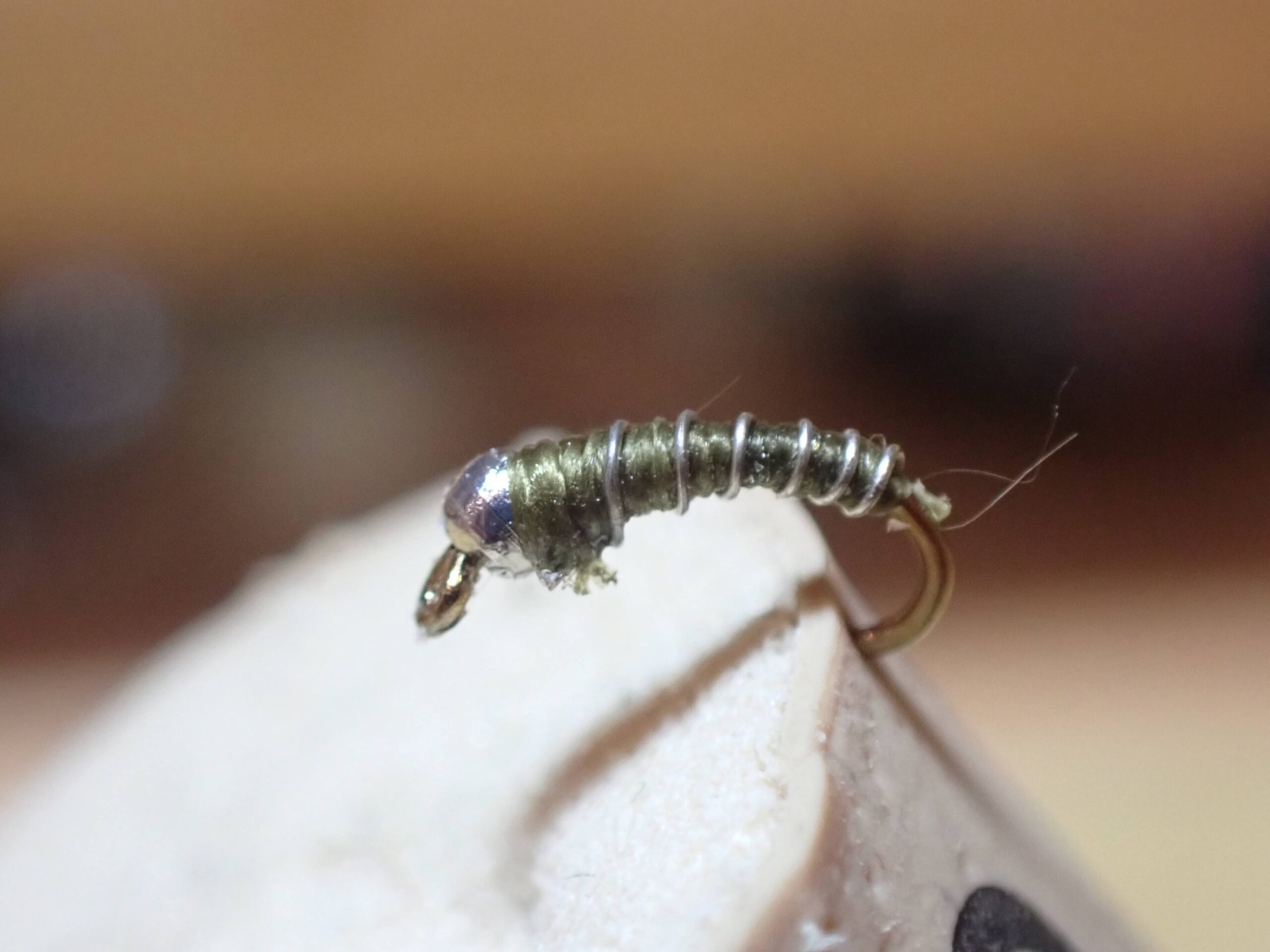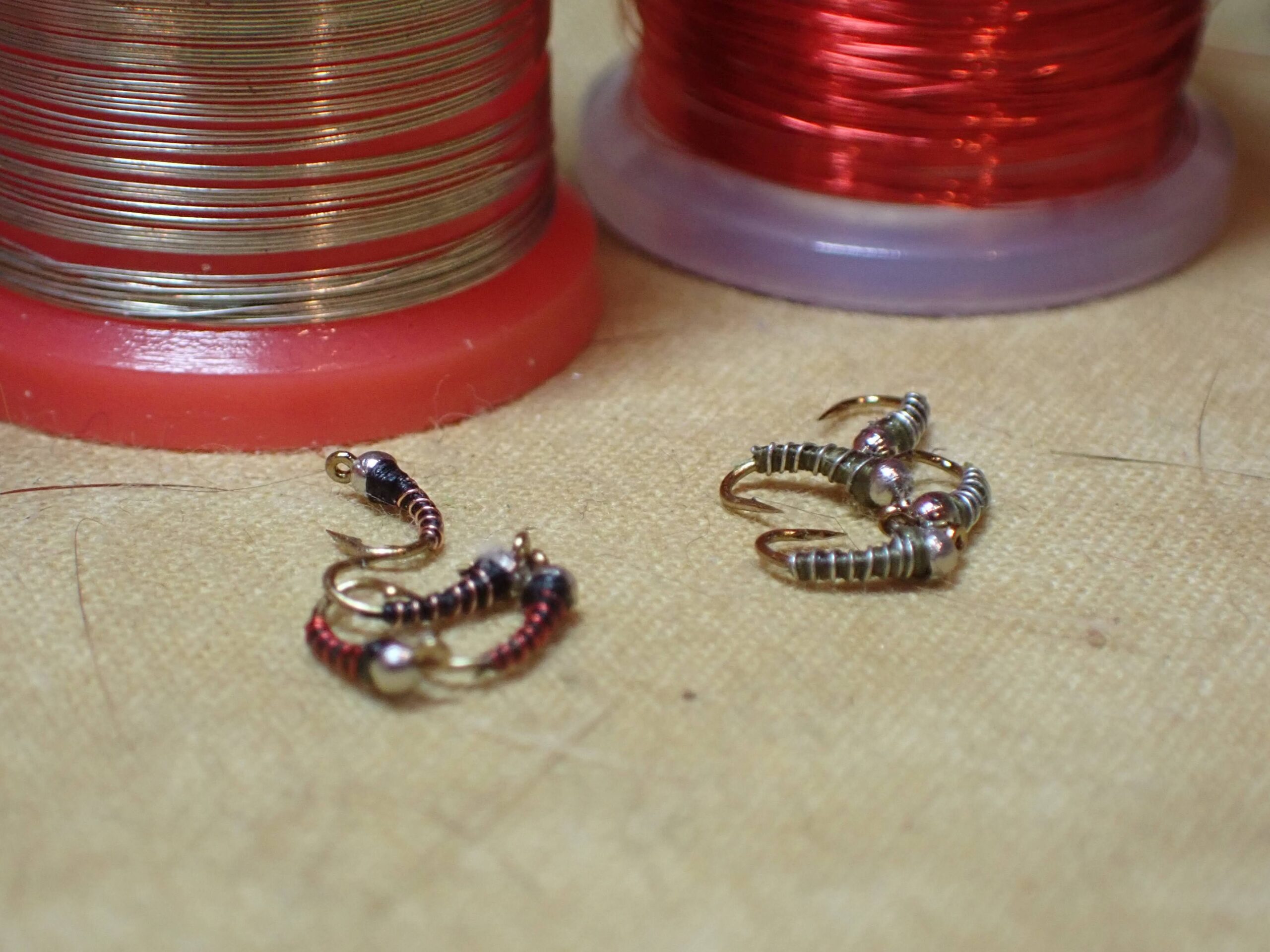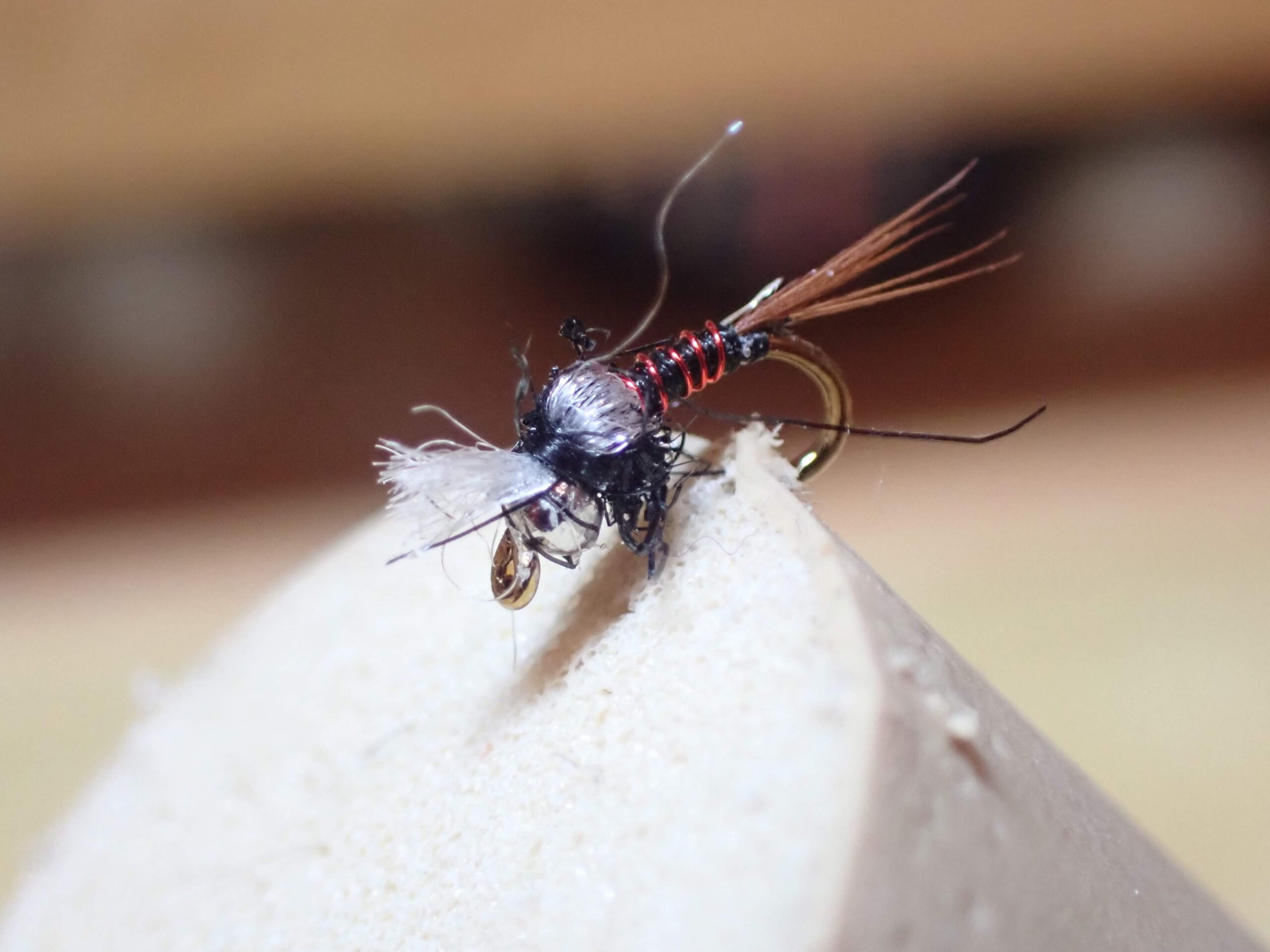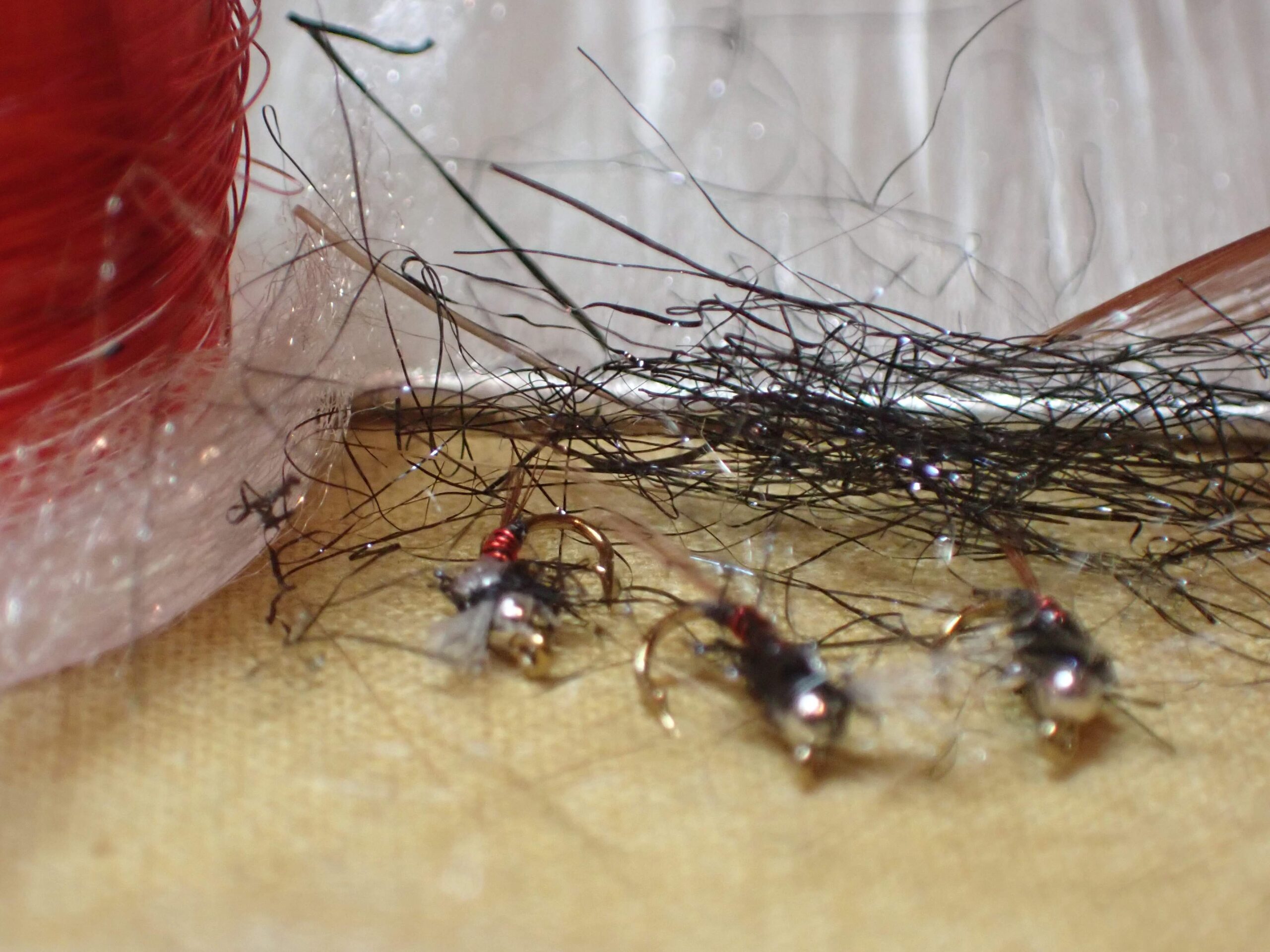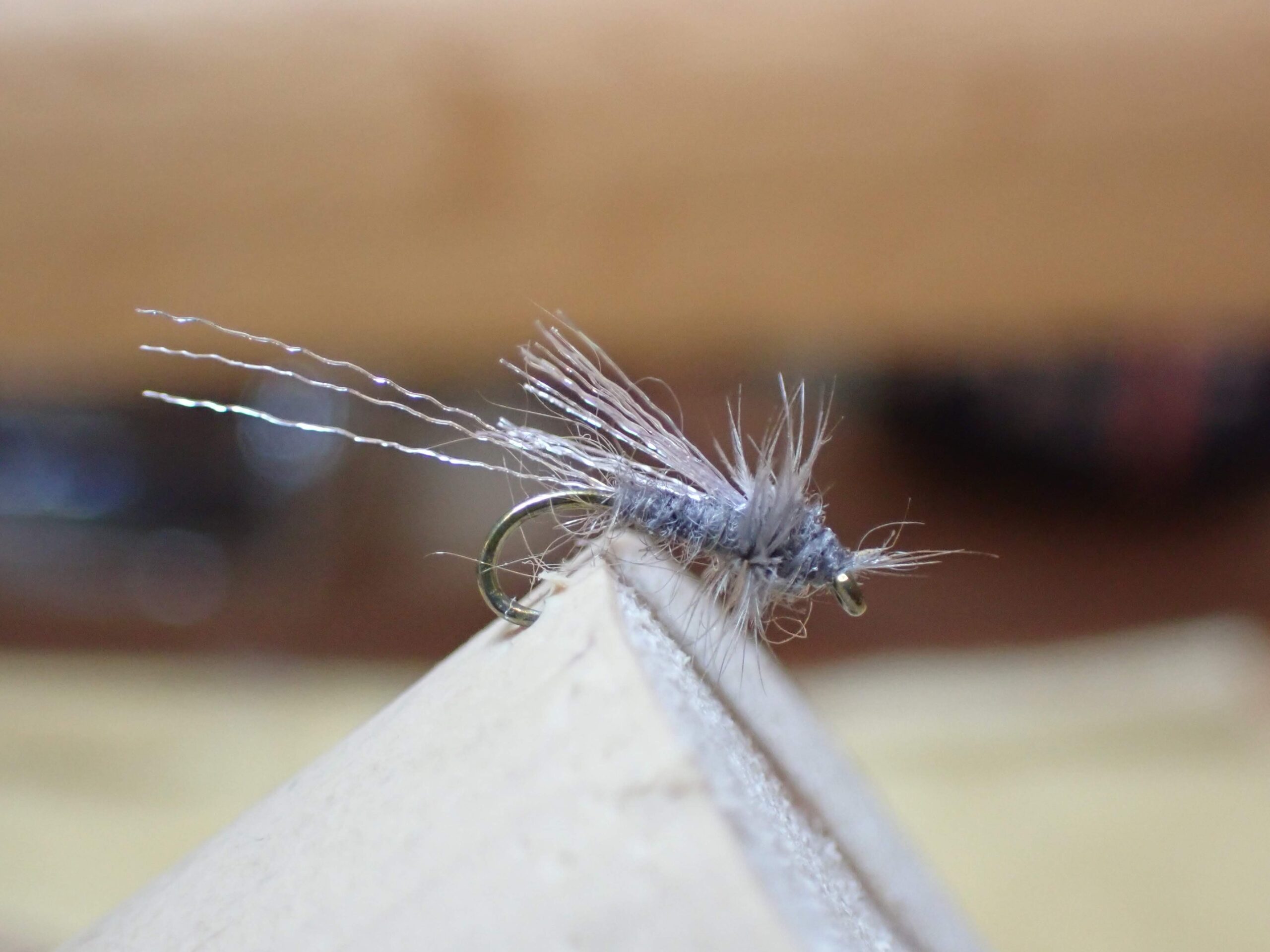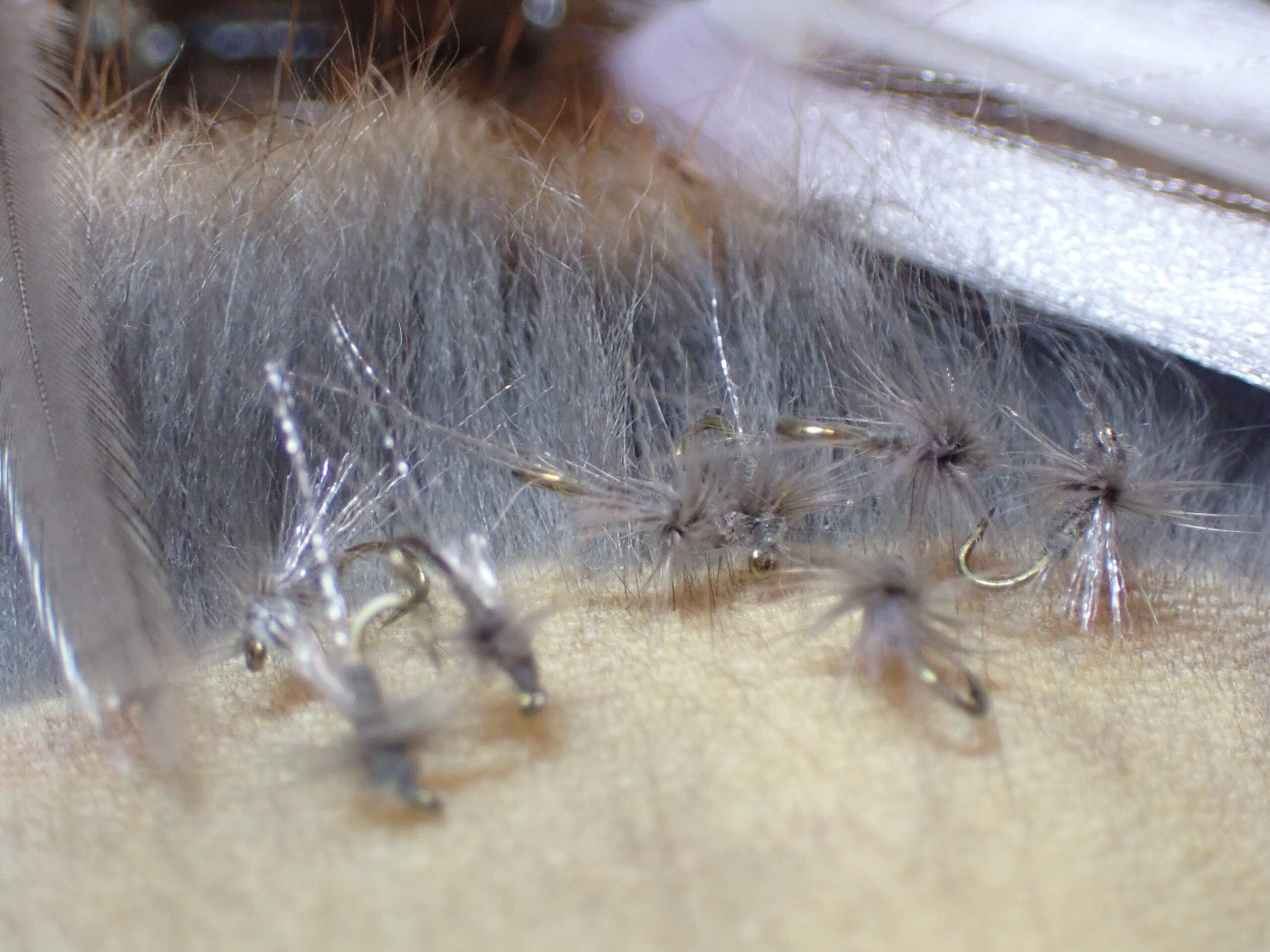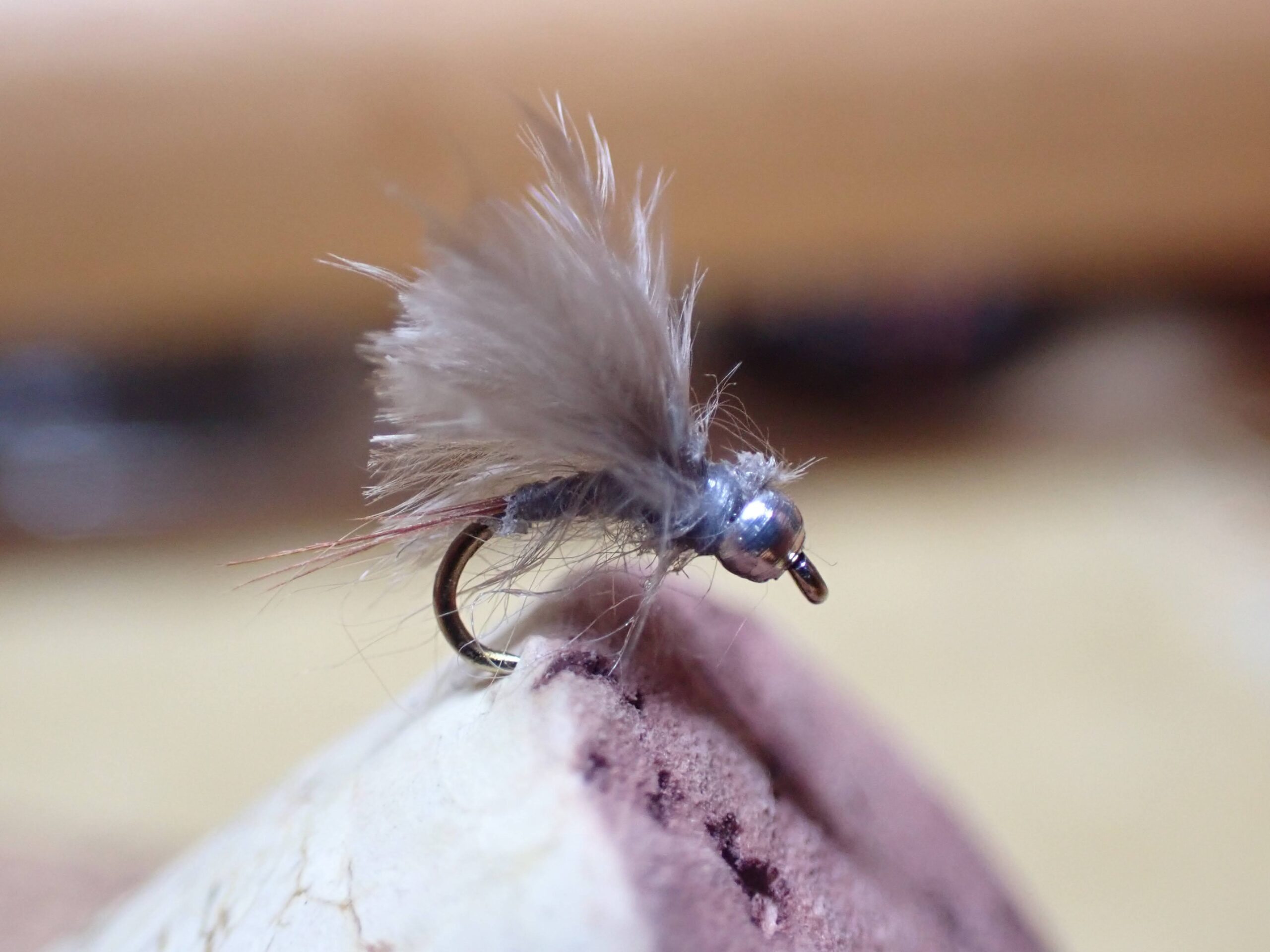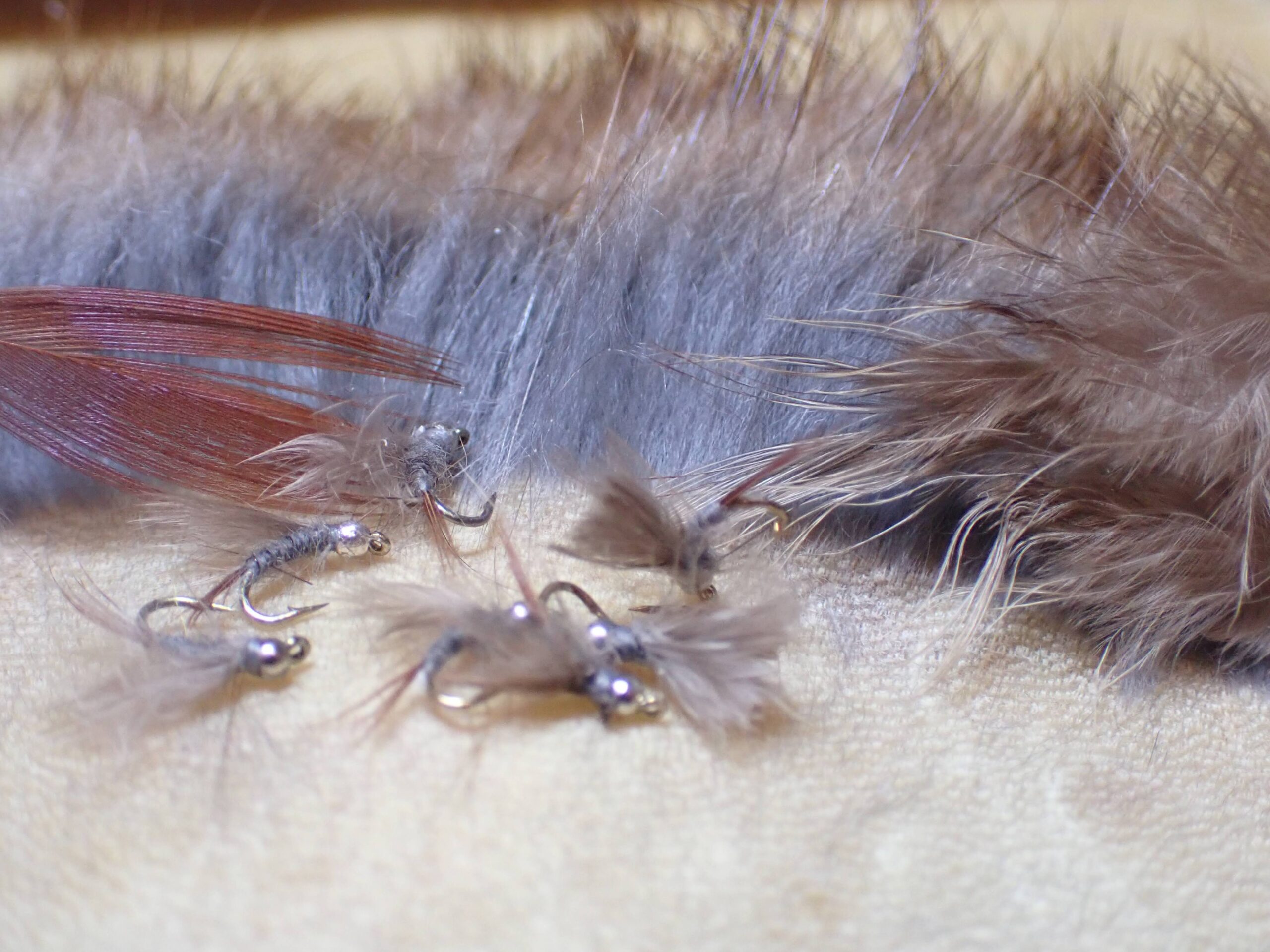Jake’s Gulp Beetle 01/16/2024 Photo Album
Check out my post of 01/17/2023 for more information and links related to Jake’s gulp beetle. This fly is quite easy to tie, and one of my historical posts provides step by step directions.
I deployed the foam beetle a few times during 2023, but I do not seem to revive its effectiveness similar to situations in past years. I suspect some of this shift resulted from my tendency to not use it, as I tend to default to the hippie stomper, stimulator or deer hair caddis before resorting to a foam beetle. This is perhaps a mistake on my part, so I will try to reverse this trend in 2024.
My supply was slightly depleted, so I tied an additional five with one going to my friend. The remaining four were split evenly between size 14 and size 12. I feel prepared for terrestrial plopping in the upcoming season.

